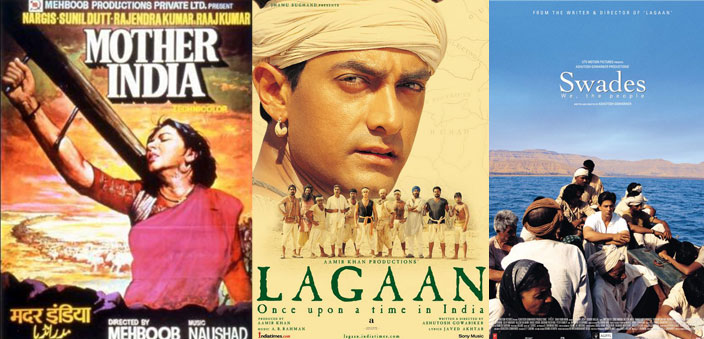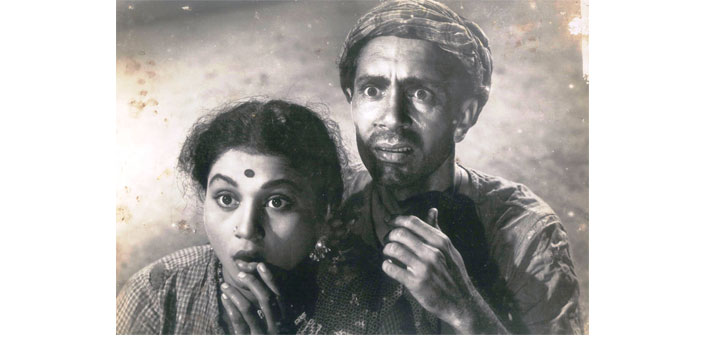In a country with 600 million farmers, of which 40 percent are willing to quit farming for various reasons, mass migration from rural to urban areas has increased rapidly. Between 1991 and 2001, 73 million people have migrated from the rural areas to elsewhere. Mass migration is a phenomenon that is a consequence of various problems in rural India,” writes Tejaswini Pagadala in her well-researched paper, From Bharat to India: Understanding Rural-Urban Migration in Research Society (January 30, 2011). The reasons she puts forward are known to us such as absence of health facilities, and lack of public health services, poverty, hunger, lack of sanitation, education, employment avenues and so on.
The question is, has Indian cinema in general, and Hindi cinema in particular, been able to reflect this migration and reverse migration, where a protagonist may have come back to the village and stayed back for good as an agency of social change? Yes, Hindi cinema has consciously or not quite so consciously, dealt with issues like migration from the villages to the cities, and in some rare cases, vice versa too, or stayed within the village scenario.
Globalisation, the increased focus on the diaspora and all that it stands for, urbanisation, industrialisation and modernisation have been predominant features of big budget commercial films like Dilwale Dulhaniya Le Jayenge and Dhoom 2. This indicates that at least in mainstream cinema, the rural-urban divide is fading, and so are elements of forced migration. But this is not correct, because films like Lagaan and Swades, thumping commercial hits, are signs that all is not lost, and rural people still find place in the minds of filmmakers in Bollywood. These films are rooted entirely in a village setting, but they are not sad, tear-jerkers that will make the audience rush to bring out their handkerchiefs. They are very positive films that show what villagers are capable of, and what an NRI can do to bring electricity to a village without it for six decades after India gained Independence.
An old, evergreen plot
The story of the rural-urban divide and forced migration or just the struggle for survival goes back to more than 50 years. One of the two major films that deal with the sad face of rural India is Bimal Roy’s all-time classic Do Bigha Zamin. Shambhu, the poor farmer in Do Bigha Zamin, had gone to the city with the sole intention of coming back one day with enough money to release the land from the grasp of the landlord. But the fertile land fit for agriculture, has already been turned over to industry.

Do Bigha Zamin is a brilliant cinematic exposition of the atrocities faced by poor people in rural as well as urban India. Moreover, the film highlights the conflict between urban and rural India. It portrays the expansion of industrialisation and urbanisation at the cost of rural agricultural India. Mehboob’s Mother India, one of the biggest hits of the 20th century, fleshes out a different kind of conflict within the village – between a young mother with two little sons, pitted against the village moneylender Sukhilal, who is prepared to shell out foodgrains to her in exchange for her ‘services’, which she staunchly refuses, and yet manages to bring up one of the two sons as a very good farmer, while the other becomes a dacoit. Radha’s story is of one, long unending struggle, not only against poverty, but also against Nature, with floods sweeping away one son, and the other dying of starvation. In the ultimate analysis, she is forced to choose between the dignity and honour of a beautiful village girl her younger son kidnaps, and the son himself. She shoots the son down and becomes the metaphorical mother to the entire village.
Some earlier films of K.A. Abbas (1914-1987) such as Dharti ke Lal, made under the IPTA banner and drawing on Bijon Bhattacharya’s famous classic Nabanna (1944) dealing with the Bengal Famine of 1943, was described as being influenced by neo-realism, other than Satyajit Ray’s milestone and all-time classic Pather Panchali, which came after Do Bigha Zamin.
Other outstanding examples are B.R. Chopra’s Naya Daur which uses the man versus machine metaphor to outline the victory of the former over the latter and Nitin Bose’s Ganga Jamuna. Both were brazenly commercial films, featured big stars like Dilip Kumar and Vyjayantimala and were filled with songs, dances and lots of action. But they represented the village scenario, endangered by industrialisation, but not being cowed down by the temptation of the city.
Ehtesham Shahid of Khaleej Times writes: “As industries were built in metropolitan cities and thousands of labourers moved to the urban workplace, the Indian hero also moved away from the countryside. Thereafter, rural India became either a symbol of uncouth manners or slapstick comedy. A string of David Dhawan-Govinda ventures, despite their share of entertainment value, reduced rural India to a farce. The country’s IT-friendly image has come to symbolise the success of urban India. The countryside, where the vast majority lives, has either been lurking in the background or has been conspicuous by its absence. Bollywood, the country’s film industry considered the largest in the world, has also got caught in the same image warp.” (January 17, 2005). Shahid attacks films like Viraasat which depicted the reverse migration of the character played by Anil Kapoor and Subhash Ghai’s Pardes, for projecting an India that is the product of pure fantasy the audience would love to see, and not a real village in the true sense of the term. The same would apply to Kalpana Lajmi’s film Rudaali though it is adapted from a famous short story by Mahasweta Devi.
A milestone called Swades
Swades is a milestone. It gives India’s rural-urban divide a new dimension. It narrates the constant struggle within the village community between what they understand by progress and how much is their level of endurance – to live without electricity in a post-Independent, globalised India, where the NASA scientist communicates through his laptop from his well-equipped office, and the same India where the entire village is devoid of electricity and therefore, a constant supply of water. When Mohan Bhargava returns to base from his NASA post, he is shocked to find a young impoverished boy selling a glass of water for 25 paise. He throws away his own mineral water bottle to build a water reservoir to generate electricity for the village.
Ketan Mehta’s Mirch Masala is a period film that shows how a young and beautiful wife is left alone to fend for herself when her husband takes up a job in the city. But when threatened by the lusty Subedar, she draws strength from her co-workers in the village’s red chilli factory and triumphs over evil with collective strength. Prakash Jha’s Mrityudand is again a story of reverse migration of a young and beautiful girl into a village through marriage. When her husband is murdered diabolically by the village contractor, she wreaks revenge even in an advanced stage of pregnancy by killing the man and strengthening the morals and the courage of the other women in the village.
Amir Ullah Khan and Bibek Deb Roy in their brilliant study, Indian Economic Transition through Bollywood Eyes – Hindi films and how they have reflected changes in India’s political economy, (Working Paper, August 2002), have chosen a list of Hindi films and tried to discover their connect with the country’s economic policies. They argue that “Bollywood after all is not just a dream factory that belts out trashy material in the fashion of assembly line production.” This list of films taken for discussion, analysis and exploration of how economic issues and policies intercut into the themes of these films, includes Bimal Roy’s Do Bigha Zamin which according to Roy and Khan is one of the most realistic portraits of its times. “One of the issues that the film talks in the first half of the film is the issue of property, a shadow of the Requisition and Acquisition of Immovable Property Act, 1952.


 [/column]
[/column]